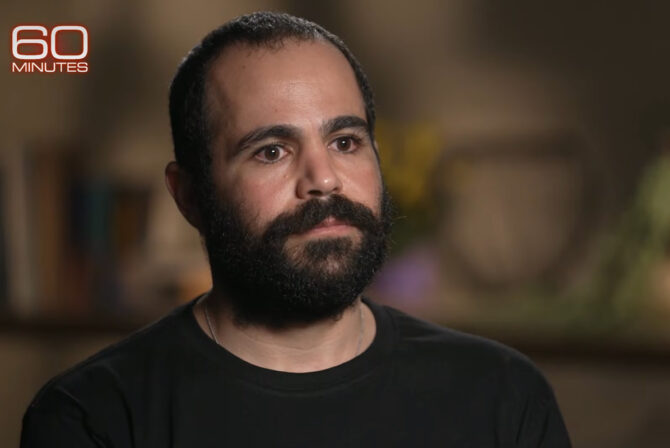In the middle of an exhausting, first year of teaching in a public high school in southern Massachusetts, I, like most teachers who come in contact with hundreds of students every day, contracted a virus, and took my first sick day. In the middle of that sick day, I got a call from the gym teacher, who I hardly knew.
“Are you OK?” He sounded reluctant to ask. Something had happened in my classroom while I was out, but he wouldn’t say what. He was shocked that no other staff had called me. He wished me well and got off the phone quickly.
When I returned to school, I demanded to know what had happened. My department chair said it was “an unfortunate incident,” and that I should talk to the principal. I finally wrangled it out: a student had spray-painted a swastika on my classroom floor and etched another swastika on my chalkboard. Something about Jews had been scrawled but only partially erased, probably so that no one would be able to identify the handwriting.
Both the chalkboard and floor were scrubbed clean before I returned.
The principal went on to explain that the police were called, but I wasn’t, because there was no investigation needed. (“These things happen. This is a small town. You’re probably the first Jewish person some of these kids have ever met.” He went on, but at some point, I walked out.) It was clear that this “incident,” a hate crime, was not going to be addressed by the school. Since then, though, I’ve wished that I’d stayed in that office to draw out exactly why he saw fit to do nothing about such an overt demonstration of hate.
Flash forward to another teaching job, this time closer to Boston. I loved this high school–I still do–its student population reflected the diversity of the small town in which it was nestled: a high concentration of Armenian students, and kids whose parents had also recently emigrated from Syria, Turkey, Lebanon, Greece, and Russia. (The bake sales were unbelievable.)
There, I became close with two students. Both wore keffiyeh scarves each day with their stylish, modern outfits. As seniors, one identified herself as Palestinian, and asked for class time to discuss the conflict. As the classroom is a place for discussion, I agreed.
During our discussion, the two students educated the rest of our class, including me, about Islamic practices and Muslim culture. We were sincerely grateful to learn, though many of the comments they made in class condemned the Jews for their own relatives’ strife. These comments became more blameful and volatile as the year went on.
As a result, when they raised their fists to one another in Palestinian nationalism, loudly exchanging praises of Allah in the hallways, they made me uncomfortable.
Dialogue between the Palestinian and Jewish students often turned into shouting matches. It was difficult to interject. Students asked one another for factual evidence about land ownership, and often concluded that the Bible and Koran were evidence enough. A religious war was erupting in my classroom and spilling into the hallways. Just before graduation, there it was: a palpable, eerie, unsettling feeling that my once-trusting students were now vehement anti-Semites, propelled into a hate culture by their own sense of duty and pride.
As a teacher, I wanted to encourage their pride. As a Jewish teacher, I wanted to diffuse their contempt for me and the other Jewish people in the building.
When I–politely, professionally–confronted one of my Palestinian students about the tension she and her friend were creating in our school, she replied that it was “the Jews” who were ultimately responsible for it. I was disappointed in myself, for letting graduation come and go without making our dialogue–and this tense, contemptuous environment–a community issue in the school. I’d let these “teachable moments” pass, for fear of creating even more tension, especially between my students and me. These were opportunities to help students learn how to listen, talk, and build respect, or, at the very least, tolerance for others. And I blew it.
I’m about to enter my 16th year of teaching. Each year, when I introduce “Man’s Search for Meaning,” Viktor Frankl’s memoir about surviving the Holocaust and his philosophy that grew out of survival, I hear students moan that they’re so tired of “Holocaust books.” I hear “Jew” jokes in the hallways. I see raised eyebrows when I tell people I’m taking two days off to observe Rosh Hashanah, when most other Jewish teachers take only one. I field queries about my religious observance and keeping kosher in the 21st century–because, let’s face it–fact and faith are supposedly incompatible, and mine is a job based in teaching and interpreting fact.
Sentiments like these are the catchy embers of what can quickly become derision, then hate. Not demanding that the investigation be fully conducted when a swastika appears on your blackboard sends a message that hate crimes shouldn’t be taken seriously. Failing to initiate dialogue between students (or staff) because it’s scary to confront passionate, indignant students is a lost opportunity for mutual understanding. Go ahead, tell me I’m too sensitive–and then look at the news that interminably pours in about hate crimes against Jews.
This September, as we return to our classrooms, the world outside has changed. Israel and Gaza have been at war, and, despite the many other, bloody, heart-wrenching, global conflicts, everyone seems to want to weigh in on this one. This fall, walk through the hallways of your own school, and be ready to listen–and to speak, to initiate dialogue. But you may not–under any circumstances–let ignorance slide.
Maybe you’re not a teacher, but you’ve graciously finished reading this. Maybe you work elsewhere–the home, an office. You’re accountable too. You’re Jewish–or you’re not, and you’re privy to intolerance wherever you are. Speak up. It’s your job.
Like this post? Get the best of Kveller delivered straight to your inbox.







